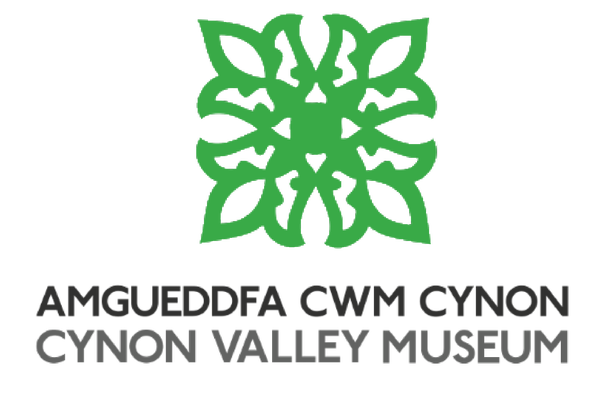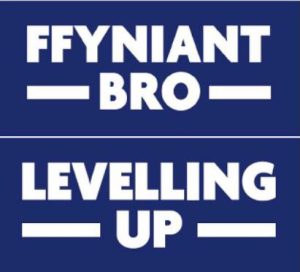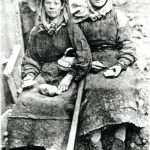LLYN FAWR and LLYN FACH
Llyn Fawr, and the smaller Llyn Fach, are natural lakes situated below Craig Y Llyn (Rhigos Mountain) at the North-West end of the Rhondda Cynon Taff area.
Humans inhabited this area from about 8000 years ago. The earliest evidence of man’s presence was found in 1963 at Craig Y Llyn. Chipped stone tools were found at the site recorded as from the Mesolithic, or middle stone age. This, and other articles found nearby, suggest seasonal nomadic activity. Though no definite Mesolithic or later settlements have been located, the concentration of finds at the Craig Y Llyn escarpment suggests the presence of temporary campsites over the years.
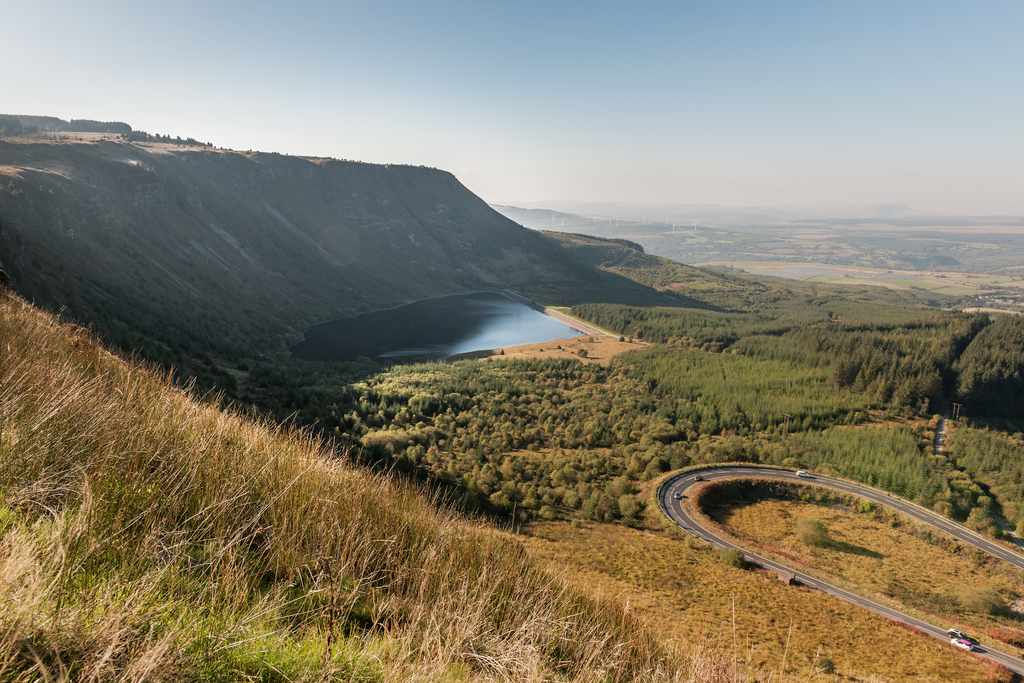
Llyn Fawr
The area would have always served as a source of water, fish, wood, and forage.
Apart from passing drovers, pack horses, tinkers, tradesmen and various travellers, little would have disturbed the area until the industrial revolution.
The population of the Rhondda increased tremendously due to the industrial revolution. In 1801 the population of the Rhondda was 542, yet in1911 it had increased to 152,781. In 1909, because of the demand for water, it was decided to turn Llyn Fawr into a reservoir.
The 12-acre lake was to be increased to 24 acres and a 25 ft. concrete escarpment to be built along the whole length of the North West side, to stop the natural outflow. There was now a total storage volume of 200 million gallons, the water supply then being pumped through a 1.25 mile tunnel under Craig Y Llyn to the water treatment works at Tynewedd, Rhondda. This tunnel is still an important part of Welsh Water’s infrastructure supplying the Rhondda Valley.
Indeed, it was during the deepening of the lake that the Llyn Fawr Hoard was discovered. Twenty-one bronze and iron objects were found altogether, including:
- A spearhead, again made from an early form of iron. All of the shaping would have been done by hand. It is assumed that metal hammers, chisels and metal knives were used, but it would have taken a lot of skill and time.
- Bronze items included parts of horse harness equipment, crude chisels, axe heads and 2 large cauldrons. The cauldrons were of a design in common use across Western Europe. They were made from hammered sheets of bronze riveted together with bronze rivets.
- A sword made in an early form of iron which proved to be stronger than the bronze used so far. The style was the same as a sword in bronze – it was even given a bronze colour. Parts of the bone handle remained.
- A sickle head with remains of the wooden handle as above, early iron and again, shaped by hand, dating from about 650 BC.
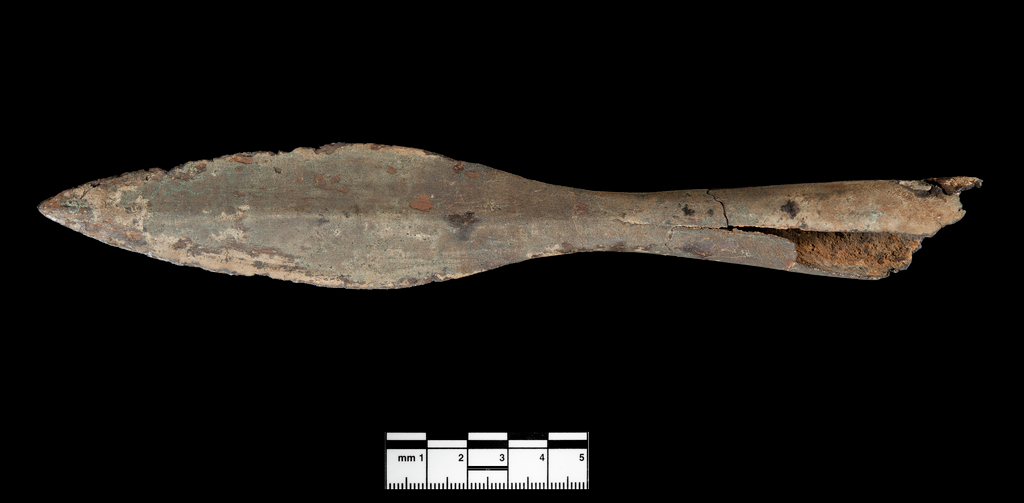
Item 12.11/21 Iron spearhead. By permission of Amgueddfa Cymru – National Museum Wales
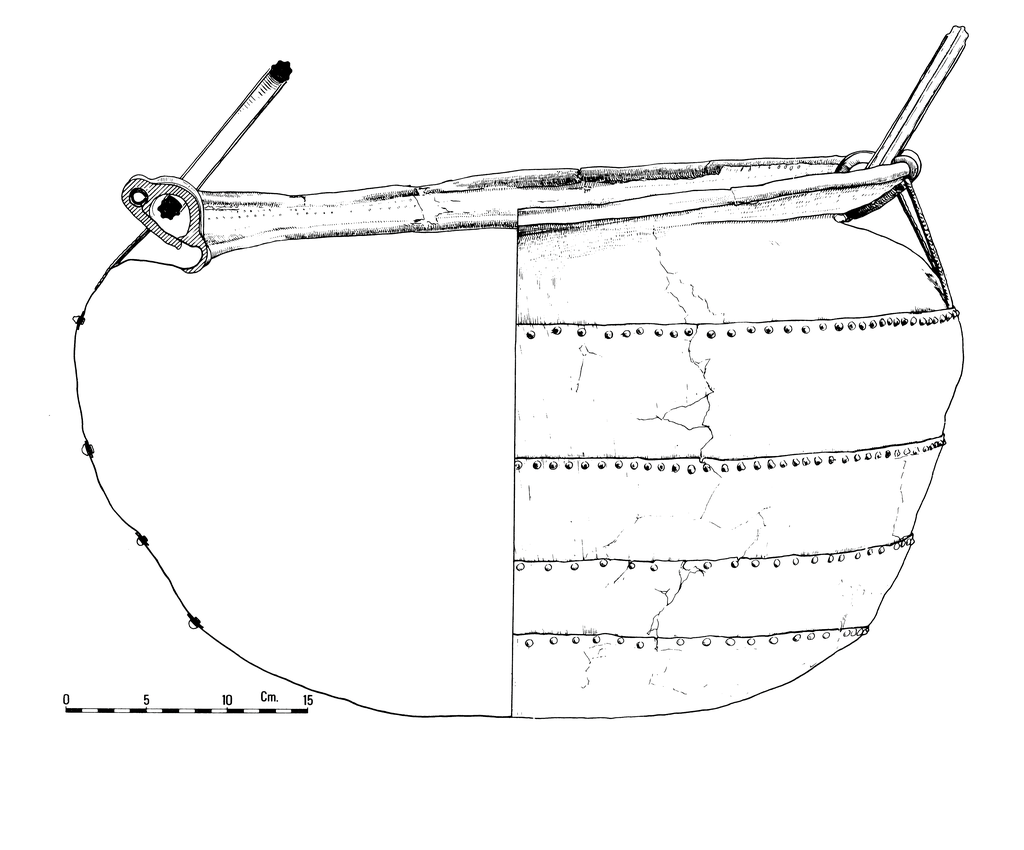
Item 13.112 Bronze cauldron. By permission of Amgueddfa Cymru – National Museum Wales.
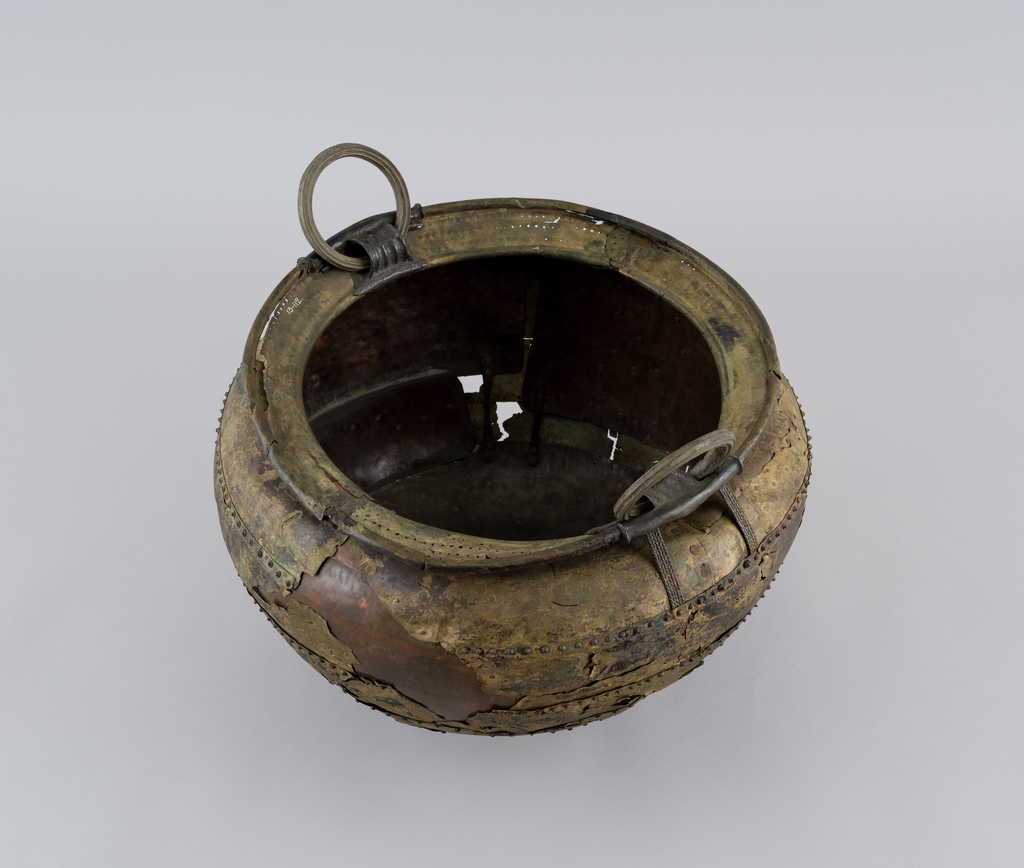
Item 13.112 Bronze cauldron. By permission of Amgueddfa Cymru – National Museum Wales.
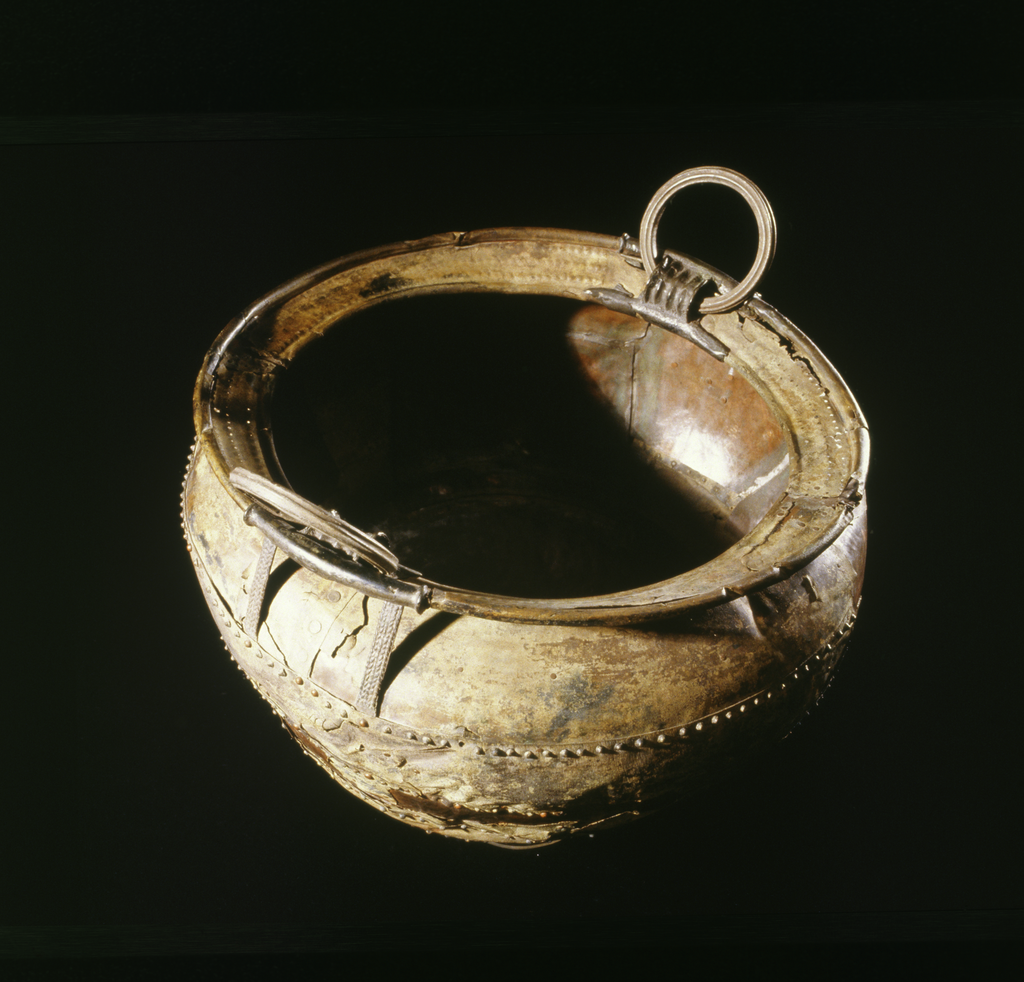
Item 13.112 Bronze cauldron. By permission of Amgueddfa Cymru – National Museum Wales

Item 36.624/2 Sword fragment. By permission of Amgueddfa Cymru – National Museum Wales
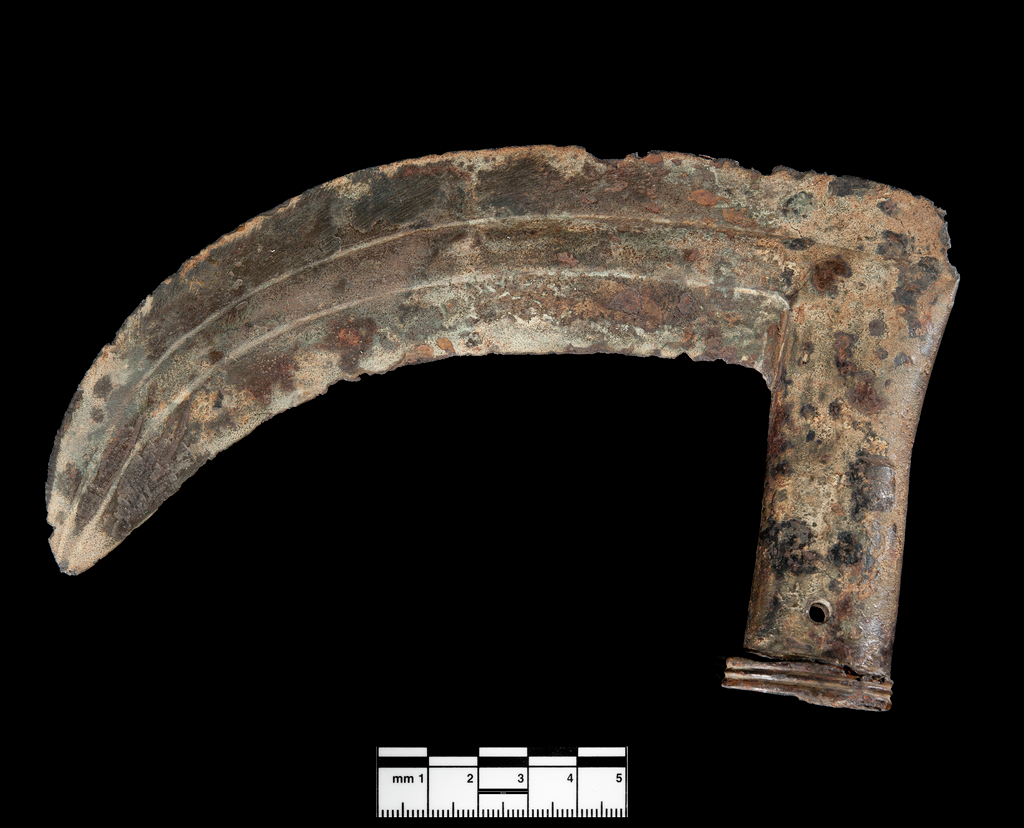
Sickle head By permission of Amgueddfa Cymru – National Museum Wales

Bronze items. By permission of Amgueddfa Cymru – National Museum Wales
The items were buried in waterlogged peat at the bottom of the lake, so were preserved in good condition.
It is thought that these artefacts were cast into the lake as ‘votive offerings’, as a sort of ‘contract’ with their gods in return for good harvests or mild winters. The reflective waters may have been seen as a boundary between the two worlds because the hoard was from the crossover period between the Bronze and Iron Ages.
‘The Llyn Fawr Phase’ is the official name of the beginning of the iron age in Britain (800-600 BC).
Site of Special Scientific Interest.
The area of Craig Y Llyn, Llyn Fawr and the smaller Llyn Fach nature reserve is 1.25 km to the West is a ‘Site of Special Scientific Interest.’
The lakes especially Lyn Fach are truly glacial in nature with a mix of acid bogs and rocky heath supporting a number of flowers, plants and ferns.
Otters are frequent visitors and water birds such as Little Grebe, Heron and Coot are in residence. There is a fishing club based here and trout abound. There is a variety of birds in this area; large flocks of migrating birds stop off to feed and fieldfare and heron are often seen here as well as the birds of prey. Joining the Kestrels, Kites, Sparrowhawks and even the occasional Peregrine Falcon are humans on the Zip World lines from the top of Craig Y Lyn over Lyn Fawr to the Tower Colliery site.
This valley has seen several changes from rural and quiet to the turmoil of industry with all the physical changes and legacy that went with it to the process and progress of the restoration.
The slopes of Craig Y Llyn, the areas by Llyn Fawr and Lyn Fach, are seen as almost the only significant unaltered landscapes in this area of the southern Welsh hills.
Blog post produced by volunteer, Robert Glare.
Sources:
National Museum Wales, https://museum.wales/iron_age_teachers/artefacts/llyn_fawr/ , https://museum.wales/iron_age_teachers/artefacts/tal-y-llyn/
Wikipedia, ‘Llyn Fawr’, Available here: https://en.wikipedia.org/wiki/Llyn_Fawr
Hirwaun Historical Society, ‘Llyn Fawr Hoard’, Available here: http://website.hirwaunhistorical.org.uk/history/lyn-fawr-hoard/
The Wildlife Trust of South & West Wales, ‘Llyn Fach, Rhigos Road, Neath Port Talbot’ Available here: https://www.welshwildlife.org/nature-reserve/llyn-fach/
Cyril Fox and H. A. Hyde, ‘A Second Cauldron and an Iron Sword from the Llyn Fawr Hoard, Rhigos, Glamorganshire’, 2012, Cambridge University Press
